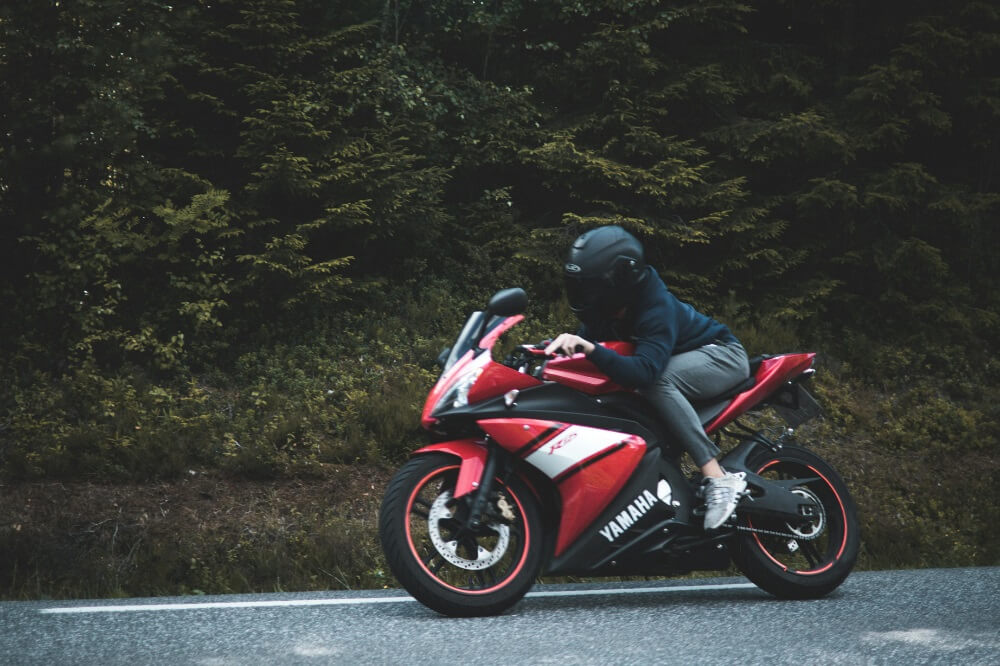Riding a motorcycle is an exhilarating experience that offers a unique sense of freedom and adventure. However, this thrill comes with a significant responsibility: ensuring your safety on the road. One of the most critical skills a motorcyclist must master is braking. Effective braking techniques can differentiate between a smooth, controlled ride and a potentially dangerous situation. In this blog post, we’ll delve into advanced braking strategies to enhance your safety and control while riding.
Understanding the Fundamentals of Braking
Braking on a motorcycle requires a delicate balance between the front and rear brakes. Applying too much pressure to the front brake can result in a dangerous front-wheel lockup. On the other hand, relying heavily on the rear brake can cause the rear wheel to skid. The key is to find the right balance and modulate the brakes effectively.
Basic Principles of Braking
- Apply the Front Brake First: Always initiate braking with the front brake. This helps distribute the braking force evenly, maintaining better control over the motorcycle.
- Follow with the Rear Brake: After engaging the front brake, gradually apply the rear brake to decelerate further. Avoid locking the rear wheel to prevent instability.
- Avoid Sudden Braking: Abrupt braking can unsettle the bike, making it harder to control. It is crucial to apply the brakes smoothly and gradually.
Mastering Emergency Braking Techniques
In an emergency, such as encountering a sudden obstacle, it’s vital to stop your motorcycle quickly and safely. This is where emergency braking techniques come into play.
Emergency Braking Sequence
- Identify the Hazard: As soon as you notice a potential hazard, assess the situation quickly to determine your best course of action.
- Apply the Front Brake: Firmly apply the front brake, but be cautious not to lock the front wheel. This will provide most of your braking power.
- Gradually Apply the Rear Brake: Once the front brake is engaged, apply the rear brake progressively to slow down further. Avoid locking the rear wheel to maintain stability.
- Maintain Control: Keep your body weight centred throughout the braking process, keeping your eyes focused on the road ahead. This helps you maintain control and avoid skidding.
Practising emergency braking in a safe, controlled environment, such as a motorcycle training course, can help you become more comfortable and confident in your ability to react quickly and effectively.
Braking in Wet or Slippery Conditions
Braking on wet or slippery roads poses additional challenges due to reduced traction. Adjusting your braking technique is essential for maintaining control and safety in these conditions.
Techniques for Wet or Slippery Conditions
- Increase Following Distance: Maintain a greater distance from the vehicle ahead. This provides more time to react and brake safely.
- Gentle Brake Application: Apply brakes gently and progressively. Sudden or heavy braking increases the risk of losing traction.
- Avoid Sudden Movements: Sharp turns or abrupt braking can make the motorcycle unstable. Smooth and gradual inputs are crucial.
- Consider Engine Braking: Using engine braking can help slow the motorcycle without relying solely on the brakes, aiding in maintaining traction.
- Be Aware of Hazards: Watch for slippery areas like painted lines, manhole covers, or oil spills. These surfaces can be especially slick when wet.
Practising braking in wet or slippery conditions in a controlled environment helps develop the necessary skills and confidence to handle such situations safely.
Developing Your Braking Skills
Improving your braking skills is a continuous process that requires regular practice and dedication. Here are some tips to help you refine your techniques:
Tips for Braking Practice
- Motorcycle Licence VIC: Ensure you have the appropriate motorcycle licence for your riding experience and type of motorcycle. In Victoria, this includes a learner’s permit and progressive licensing stages.
- Stay Upright Motorcycle Training: Enrol in a training course with a reputable provider like Stay Upright. These courses offer expert instruction and practice in advanced braking techniques in a safe environment.
- Road Practice Test: Regularly practice your braking skills on the road in a safe and legal manner. Consider taking a road practice test to assess your skills and identify areas for improvement.
- Continuous Learning: Stay current with the latest braking techniques and safety information by following industry blogs, attending workshops, and learning from experienced riders.
The more you practise and refine your braking skills, the more confident and in control you’ll feel on the road. By mastering advanced braking strategies, you’ll be better equipped to handle various riding conditions and emergencies, ultimately improving your overall safety and enjoyment.
In conclusion, advanced braking strategies are essential for every motorcyclist. By understanding the fundamentals, mastering emergency braking techniques, adjusting for wet or slippery conditions, and continually developing your skills, you can significantly enhance your safety and control on the road. Remember, the road is unpredictable, and being prepared with the right braking techniques can make all the difference. Stay safe and enjoy the ride!



